There have been 12 scores of more than 400 in an ODI inning in the past decade. Between 2000 and 2010, there were only 7 such scores. The record for highest team total in an ODI was breached twice in the last 2 years, both times by England.
There have been 8 individual double centuries in ODIs within the past decade, scored by 6 different batsmen. There were none before 2010. One Day International cricket is a unique format, one that has, in the past decade, absorbed the unpredictability of Test cricket and the pulsating adrenaline of T20 cricket into a package that continues to entertain cricket fans across the world.
As with any era, we have seen many pulsating and exciting ODI matches across the decade, most recently the pulsating and exciting 2019 World Cup final between New Zealand and England, that led to a tie after 50 overs each, a tied Super Over and an England win on a mere technicality.
There have been many stories of note across this period, such as Virat Kohli’s rise as a premier batsman of the format and the performances of former associate teams such as Ireland and most notably, Afghanistan. However, the biggest story appears to be the resurgence of the English team in the format at the tail end of the decade, after a disappointing 2015 World Cup, which culminated in their first-ever ODI World Cup title.
Across 1312 games, three World Cups and two editions of the Champions Trophy, this is a playing XI consisting of the most consistent performers for their national teams in this period.
Note: Statistics in bold are measured for the period of 2010-2019, or from the player's ODI debut
Rohit Sharma (173 innings, 7991 runs, Avg: 52.92)
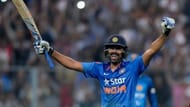
Initially making his debut as a lower-order batsman and part-time off spin bowler, Rohit Sharma was first promoted to open the innings during the 2013 Champions Trophy in England. In that tournament, he was a part of two successive century opening stands against the Proteas and Sri Lanka.
Since then, he has not only sealed the opening slot for himself but has also become India’s second choice captain in both white-ball formats. He also scored three double centuries in the format, first beating Virender Sehwag’s record for the highest individual ODI score with a mammoth 209 against Australia in Bangalore, before breaking his own record next year with a devastating 264* against Sri Lanka at the Eden Gardens.
He was also an instrumental part of India’s run to the 2019 World Cup semifinals with 648 runs in the tournament, a record for the most scored in a single edition.
It is fair to say that his meteoric rise has not only contributed to his team’s rise in ODIs but also has sealed his personal status as an ODI legend.
Jason Roy (81 innings, 3381 runs, Avg: 42.79)
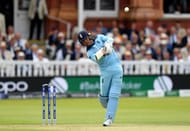
One of the biggest success stories of ODI cricket in the past decade has been the incredible rise of England as an ODI powerhouse. The inclusion of hard-hitting Surrey right-hander Jason Roy as the opener was the first shift in attitude post the debacle at the 2015 World Cup campaign which saw them fail to move past the group stage.
Roy has, barring injury, forced himself as the first-choice opener in his country's ODI team. In 2018, he cracked 180 against Australia at the MCG, the highest individual ODI score by an English batsman. His primary weapons include his flamboyant cut shots behind square and his signature shot, skipping down the track and hitting over long-on.
With 3381 runs in 81 innings at a fantastic strike rate of 107.4, he looks hungry to push his dominance as one of the world's leading ODI openers into the new decade.
Virat Kohli (217 innings, 11036 runs, Avg:63.06)
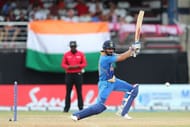
There is nothing that has not already been written in the media about the greatest ODI batsman not only of the decade but also perhaps of this new century.
Adjudged ICC ODI Player of the year in 2012, 2017 and 2018, the elegant right-handed batsman from Delhi currently has the second-most ODI centuries, lies in the top 10 in terms of aggregate runs and stands at the top of the pile in terms of ODI averages (min 100 innings) with a stunning average of 60.31.
He is the architect of some of India’s greatest ODI innings, including an 85-ball 133 to seal a miraculous bonus-point win against Sri Lanka and put his team in the tri-series final in Australia (2012) and an innings of 183 (148 balls) to seal a come-from-behind Asia Cup win against Pakistan.
Despite being more widely admired for his wristwork, and his cover drives (probably the most eye-catching of shots in our game presently), his other qualities have also aided his rise to the very top, such as his excellent strike rotation capability and his aggressive intent. Currently 31 years old, Virat Kohli still has many productive years of ODI batting ahead of him.
AB de Villiers (129 innings, 6485 runs, Avg: 64.20)
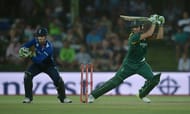
Watching Mr. 360 at work is like watching no other batsman in our game. With his vast array of shots all around the wicket, from the conventional drives and flicks to the unorthodox tennis backhand shots and the reverse sweeps behind square on both sides, he seems to place the ball at virtually any position of his choosing.
While AB de Villiers has shared a protracted relationship with the wicketkeeper’s gloves and the captaincy of the national team, his batting has remained unfailingly reliable.
He was adjudged ICC ODI Player of the year in 2010, 2014 and 2015. Also, he became just the 5th player to score consecutive centuries in a World Cup in 2011 and finished the 2015 edition as the third-highest run-scorer with 482 runs at a mammoth strike rate of 144 and an equally unbelievable average of 96. In addition, he also holds the records for the fastest ODI 50, 100 and 150 all scored in 2015 against the West Indies.
He retired from all formats of International cricket in early 2019, but the rumour mill keeps churning out possibilities of an international comeback, after his great form in domestic T20 tournaments all around the world.
Ben Stokes (81 innings, 2682 runs, Batting Avg: 40.63, 70 wickets)
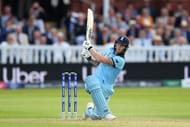
Many consider him a natural successor to Jacques Kallis as the world’s best all-rounder. While he has had constant brushes with controversy, the New Zealand-born left-hand batsman and right-arm medium pacer has always been a consistent performer for his team in all three facets of the game.
As the bedrock of his team’s middle order, Ben Stokes is capable of switching gears rapidly from middle-order rock to swashbuckling death hitter. He also offers his more than useful skill of medium pace bowling, with an ability to hit the deck hard and generate considerable pace.
He has always been a constant in the England ODI squad since their renewed focus on the limited-overs formats, but his real breakout year was 2019, a year which included 465 runs in the World Cup. He was adjudged man of the final for his first innings 89, in a game more well known for the controversy surrounding the boundary countback rule.
At the young age of 28, he would look to continue contributing to his team’s success and entrench himself as the best all-rounder in the world.
Jos Buttler (117 innings, 3843 runs, Avg:40.88, S/R: 119.83)
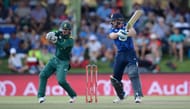
Since making his ODI debut in 2012, Jos Buttler has become one of the main symbols of his team’s resurgence in the format. Capable of not only providing a flourish at the end of the innings but also of holding an innings together with the tail, Buttler has been at his dominating best at the number 6 position, having made 4 centuries and 11 half-centuries from 64 innings at that position in the past decade.
More than 51% of his career ODI runs have come from that position, and he strikes at a cool 111.13. He remains the owner of the two fastest ODI centuries to be scored by an Englishman, off 46 and 50 balls respectively.
His primary weapons as a batsman are his fast hands, his shots over long-on and a nerveless ramp over the wicket-keeper’s head. While he primarily plays as wicket-keeper, he is also a superb fielder in the outfield.
With limited-overs cricket and especially ODIs being the main focus of English cricket post a historic maiden World Cup title, Buttler will be challenged further to maintain his status as the most dynamic and explosive lower-order player of our time.
MS Dhoni (161 innings, 5640 runs, Avg: 50.36, 170 catches/ 72 stumpings)
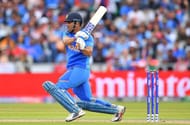
The past decade has been one of two halves for the Indian legend behind the stumps. After having led an experienced team to the 2011 World Cup title at home, and a young team to the 2013 Champions Trophy title in England, he relinquished the captaincy of the team to Virat Kohli. However he remains a superbly capable wicketkeeper, probably the most able in the world despite his advancing age, and a capable batsman lower down the order.
MS Dhoni's most defining innings of the decade might have been his effort in the 2011 World Cup final (91 off 79 balls), but he has still been a crisis man for the team in many other situations since then, with innings such as his 92 off 86 balls to lift India from 165/7 in the 40th over to a match-winning 247/8 in 50 overs in an ODI against South Africa in 2015.
He has not played an ODI since India’s 2019 World Cup semi-final heartbreak, and at the age of 38, it may not be realistic for him to play much longer. However, there is no doubt of his capability as not only a wicketkeeper and a batsman but also a source of support and experience to all those around him.
Mitchell Starc (85 innings, 172 wickets, Econ: 5.02)
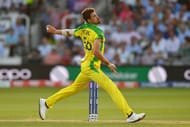
Left-arm quicks have always captured the imagination of the cricket-watching public and watching Mitchell Starc, whose primary weapons are his control over the swinging ball and his height, captures the imagination like no one else. He combines lightning pace and pin-point accuracy into a bowler who is, at his best, unplayable and at all other times, simply one of the hardest to face in the world.
Starc was the top wicket-taker in successive ODI World Cups (2015, which led his team to their 5th world cup win. and 2019). Since his ODI debut in 2010, he has picked up 172 wickets in 85 bowling innings, with a career economy of 5.02 and a strike rate of 25 being the standout statistics as a new ball bowler in the modern game.
His height (1.96 meters) and his amazing control over the swinging ball are his key weapons. As Australia’s spearhead in all formats of the game, he has often been plagued by injuries to his ankles, but he would be keen to continue staying at the top of his game as one of the leading fast bowlers of our time.
Trent Boult (89 innings, 164 wickets, Econ: 5.05)
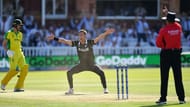
Yet another left-arm quick with a prodigious ability to swing the ball both ways finds himself as one of the leading ODI cricketers of the decade. From once being regarded as a test match specialist, to becoming the 7th fastest person to 100 wickets in ODIs since his debut in 2012, he has come a long way in the format.
Boult's 22 wickets in the 2015 World Cup (joint highest along with Mitchell Starc) included a spell of 5/27 in a miracle win against eventual final opponent and champion Australia. He remains the most recent person to have taken an ODI hat-trick at the time of writing, and he is also one of the few players to have taken multiple hattricks in the format.
With his status as a Kiwi great already carved in stone for the most part, the ICC’s No.2 ranked bowler in ODI cricket looks in prime position to be one of the pace spearheads of our time.
Jasprit Bumrah (58 innings, 103 wickets, Econ: 4.49)
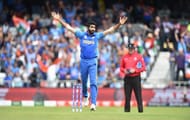
Behind the unorthodox action and the massive grin on his face lies one of the most devastating weapons any captain could wish to have in their side. Probably the bowler who has most imprinted himself on cricket watchers in this past decade, he made his ODI debut in 2016 and since then has become India’s first-choice opening bowler in the format.
Currently ranked number 1 in the world by the ICC, Jasprit Bumrah is the owner of several variations in length and pace, the most famous of which is his almost unplayable yorker that has beaten many a capable batsman during his ODI career of 58 matches. He has also recently honed his ability to swing the white ball, which was on display at this year’s World Cup where he ended 5th on the wicket-takers list(18 wickets in 9 games).
As the youngest member of this team, he still has plenty of cricket left in him, and he is already at the forefront of a pace revolution that has made India almost invincible in the format.
Imran Tahir (104 innings, 173 wickets, Econ: 4.65)
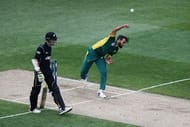
Leg spin bowling is a dying art, many would say, but it is an art nevertheless. And in a format which seems hell-bent on punishing all types of spin bowling with a vengeance, few still maintain the skill and heart required to bowl it.
One notable exception to the above, however, is Pakistan-born South African Imran Tahir. After making his debut in the 2011 World Cup (where he was his team’s second-highest wicket-taker), he has continued to be a shining light for legspinners in the 50-over format.
His list of variations seems to be even longer than his celebratory run each time he picks a wicket, and he has become one of the finest exponents of the googly, the legspinner’s prime weapon. In the 8 years since his debut, he has had to deal with periods out of the team, and lack of patience and understanding for his craft in a country that seems to thrive on pace.
However, he continued to serve his team faithfully throughout the decade, with 173 ODI wickets in 104 bowling innings at just 24.83 runs apiece. Most recently he was in the news for dismissing England opener Jonny Bairstow with the second ball of the 2019 World Cup.
After South Africa’s last group stage game of that tournament, against Australia, he announced his international retirement at the age of 40.
Brand-new app in a brand-new avatar! Download CricRocket for fast cricket scores, rocket flicks, super notifications and much more! 🚀☄️
